Regular visits to the dentist are essential to maintaining healthy teeth and gums. Combining a good home care regimen with a dental examination at least every six months provides maximum benefit.
Dental Exam
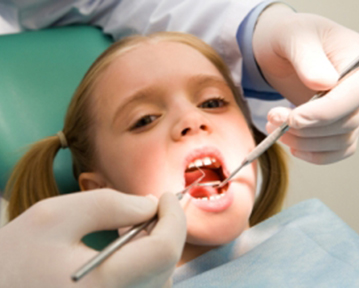 Dental Exam
Dental Exam Your dental exam will include:
- Diagnostic x-rays (radiographs) to detect any tooth decay, tumours, cysts, bone loss and the positioning of the teeth.
- An oral cancer screening, checking face, neck, lips, tongue, throat, tissues, and gums for any signs of oral cancer.
- Gum disease evaluation, checking your gums and bone around your teeth for any signs of periodontal (gum) disease.
- Examination of tooth surfaces for signs of tooth decay.
- Examination of your existing fillings, crowns, veneers etc.
Dental Cleaning
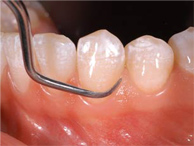 Dental Cleaning
Dental Cleaning Dental cleanings and check-ups are extremely important. Your dentist can prevent problems before they become problematic. Regular check-ups and cleaning help maintain healthy teeth for a life time. At Spectrum Dental, your dental cleaning will consist of:
- Plaque Removal: Dental plaque is a sticky, colorless film that continually forms in between and on the surface of the teeth. Dental plaque is a biofilm that is made up of microorganisms such as streptococcus mutans and other bacteria. It can develop on teeth above the gum line (supragingival), below the gum line on the roots of teeth (subgingival) and along the gum line (gingival). If dental plaque accumulates and is not removed, it can harden and turn into calculus or tartar.
- Calculus (tartar) removal: Calculus or tartar is a hard, yellowish deposit on teeth. It is composed of mineral salts, food, and other debris that has hardened over time. Tartar cannot be brushed off. It has a rough surface, attracting more debris and food particles, causing a repeating cycle of tartar formation and buildup.
- Teeth polishing: A dental polishing aims to remove stains and plaque that is not otherwise removed during tooth brushing and scaling.
Dental X Rays
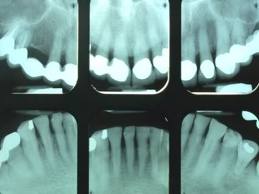 Dental X-ray
Dental X-ray Without dental x-rays, problem areas may go undetected. Dental radiographs (x-rays) are essential, preventative, diagnostic tools providing valuable information not visible during a regular dental exam. Dentists and dental hygienists use this information to safely and accurately detect hidden dental abnormalities and complete an accurate treatment plan.
Potential problems Dental x-rays may reveal:
- Problems inside a tooth or below the gum line
- Poor tooth and root positions
- Cancerous and non-cancerous tumors
- Abscesses or cysts
- Bone loss
- Decay between the teeth
- Developmental abnormalities
Home Dental Care
In order to create and maintain a beautiful, healthy smile, proper home personal care is required. This involves eating balanced meals, eating fewer snacks, and correctly using the proper dental cleaning methods to control plaque and bacteria which cause disease. These include:
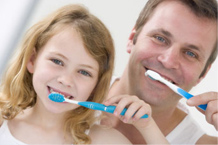 BRUSHING
BRUSHING Proper brushing is essential for cleaning teeth and gums effectively. Use a toothbrush with soft, nylon, round-ended bristles that will not scratch and irritate teeth or damage gums. An electric toothbrush will help you to brush in the manner outlined below and is less irritating on the gums.
- Place bristles along the gum line at a 45-degree angle. Bristles should contact both the tooth surface and the gum line.
- Gently brush the outer tooth surfaces of 2-3 teeth using a vibrating back & forth rolling motion.
- Move brush to the next group of 2-3 teeth and repeat.
- Gently brush using back, forth, and rolling motion along all of the inner tooth surfaces. Tilt brush vertically behind the front teeth. Make several up & down strokes using the front half of the brush.
- Place the brush against the biting surface of the teeth and use a gentle back and forth scrubbing motion. Brush the tongue from back to front to remove odor-producing bacteria.
Remember to replace your toothbrush every three to four months. Researchers have established that thousands of microbes grow on toothbrush bristles and handles. Most are harmless, but others can cause cold and flu viruses, the herpes virus that causes cold sores, and bacteria that can cause periodontal infections.
 FLOSSING
FLOSSING Proper flossing removes plaque and food particles in places where a toothbrush cannot easily reach — under the gumline and between your teeth. Because plaque build-up can lead to tooth decay and gum disease, daily flossing is highly recommended.
To receive maximum benefits from flossing, use the following proper technique:
- Starting with about 18 inches of floss, wind most of the floss around each middle finger, leaving an inch or two of floss to work with.
- Holding the floss tautly between your thumbs and index fingers, slide it gently up-and-down between your teeth.
- Gently curve the floss around the base of each tooth, making sure you go beneath the gumline. Never snap or force the floss, as this may cut or bruise delicate gum tissue.
- Use clean sections of floss as you move from tooth to tooth.
- To remove the floss, use the same back-and-forth motion to bring the floss up and away from the teeth.
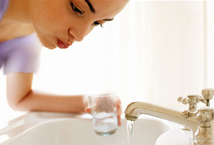 RINSING
RINSING It is important to rinse your mouth thoroughly with water after brushing, and also after meals if you are unable to brush. If you are using an over-the-counter product for rinsing, it’s a good idea to ask your dentist or dental hygienist whether it’s right for you. Other dental aids may be recommended by your dentist or dental hygienist:
- medicated rinses
- fluoride
- tongue cleaners
- interdental brushes
- rubber tip stimulators
- irrigation devices


 Dental Exam
Dental Exam  Dental Cleaning
Dental Cleaning  Dental X-ray
Dental X-ray  BRUSHING
BRUSHING  FLOSSING
FLOSSING  RINSING
RINSING